
Nanoscale Research Letters
Scope & Guideline
Shaping the future through nanoscale discoveries.
Introduction
Aims and Scopes
- Nanomaterials Synthesis and Characterization:
The journal publishes studies on various methods for synthesizing nanomaterials, including chemical, physical, and biological approaches. Characterization techniques such as electron microscopy, spectroscopy, and X-ray diffraction are often employed to analyze the structural, optical, and electronic properties of synthesized materials. - Nanotechnology in Biomedical Applications:
Research articles often explore the use of nanomaterials in medicine, including drug delivery systems, imaging agents, and therapeutic applications. Studies focus on biocompatibility, targeting mechanisms, and the efficacy of nanomaterials in treating diseases such as cancer. - Nanophotonics and Optoelectronics:
The journal features research on the interaction of light with nanostructured materials, including applications in photodetectors, solar cells, and light-emitting devices. Topics often include plasmonics, light trapping, and enhancement of light-matter interactions. - Energy Storage and Conversion:
Research on nanomaterials for energy applications, such as batteries, supercapacitors, and fuel cells, is prevalent. Studies focus on improving the efficiency, stability, and capacity of energy devices through the use of advanced nanostructures. - Environmental Applications of Nanomaterials:
The journal includes research on the use of nanotechnology for environmental remediation, sensing, and pollution control. Articles may discuss the efficacy of nanomaterials in capturing pollutants or enhancing the degradation of harmful substances. - Nanoelectronics and Device Fabrication:
The journal covers advancements in nanoscale electronic devices, including transistors, memristors, and sensors. Research focuses on fabrication techniques, device performance, and integration of nanomaterials into electronic systems.
Trending and Emerging
- Biomimetic and Bioinspired Nanomaterials:
Research focusing on designing nanomaterials that mimic biological systems or utilize biological components is on the rise. This trend is significant for applications in drug delivery, tissue engineering, and biosensing. - Nanomaterials for Sustainable Energy Solutions:
There is a growing emphasis on the development of nanomaterials aimed at enhancing sustainability in energy production and storage. Studies on solar cells, fuel cells, and nanomaterials for catalysis are increasingly prominent. - Integration of Machine Learning in Nanotechnology:
The application of machine learning and artificial intelligence to predict the properties and behaviors of nanomaterials is gaining traction. This trend enhances the efficiency of material discovery and optimization processes. - Advanced Drug Delivery Systems:
Research on multifunctional drug delivery systems utilizing nanomaterials is expanding. These systems often incorporate stimuli-responsive mechanisms to improve therapeutic efficacy and reduce side effects. - Environmental Nanotechnology:
There is an increasing focus on the role of nanotechnology in environmental applications, particularly in pollution remediation and sensing. This trend reflects a broader societal shift towards sustainability and environmental protection. - Quantum Dots and Plasmonic Nanomaterials:
Emerging studies on quantum dots and plasmonic nanomaterials for applications in photonics and optoelectronics are gaining momentum, highlighting their potential in next-generation devices.
Declining or Waning
- Traditional Bulk Materials Research:
There has been a noticeable decrease in studies focused on bulk materials and their properties, as the field increasingly shifts towards nanoscale investigations. This trend reflects the growing recognition of the unique properties and potential applications of nanomaterials over traditional materials. - Static and Non-Dynamic Systems:
Research involving static systems or those that do not incorporate dynamic interactions has become less prevalent. The field is moving towards studies that embrace dynamic processes, such as real-time monitoring and responsive materials. - Focus on Inorganic Nanomaterials Alone:
Although inorganic nanomaterials remain significant, there is a declining emphasis on studies that exclusively focus on them. There is a growing trend towards hybrid systems that integrate organic and inorganic materials for enhanced functionalities. - Basic Theoretical Studies:
There has been a decline in purely theoretical studies without experimental validation. The community is increasingly favoring research that combines theoretical insights with experimental data to drive practical applications.
Similar Journals
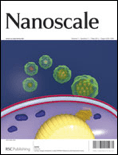
Nanoscale
Pioneering Discoveries in Materials Science.Nanoscale is a premier academic journal published by the Royal Society of Chemistry, dedicated to advancing the field of nanoscience and nanotechnology. With both its ISSN (2040-3364) and E-ISSN (2040-3372) ensuring wide accessibility, the journal is renowned for its high-impact research contributions, reflected in its impressive 2023 Impact Factor and prestigious Q1 ranking in both Materials Science (Miscellaneous) and Nanoscience and Nanotechnology categories. Since its inception in 2009, Nanoscale has fostered a collaborative platform where leading researchers from around the globe share their innovative findings across a multitude of topics spanning from material synthesis to applications in nanotechnology. The journal not only serves as a valuable resource for professionals, researchers, and students but also actively engages the academic community in discussing emerging trends, thus shaping the future of nanoscience. Situated in the heart of the UK at Thomas Graham House, Science Park, Milton Rd, Cambridge CB4 0WF, Nanoscale remains a key publication for those looking to keep abreast of the latest breakthroughs in an ever-evolving field.
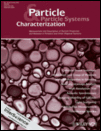
PARTICLE & PARTICLE SYSTEMS CHARACTERIZATION
Deepening Knowledge in Materials SciencePARTICLE & PARTICLE SYSTEMS CHARACTERIZATION is a distinguished journal dedicated to advancing the knowledge within the fields of Chemistry, Condensed Matter Physics, and Materials Science. Published by WILEY-V C H VERLAG GMBH in Germany, this journal has established a solid reputation since its inception in 1984, showcasing research aimed at understanding the intricate properties and behaviors of particulate systems. With an impressive Q2 ranking in its respective categories and Scopus ranks indicating a robust standing in the global research community, it serves as an essential resource for researchers, professionals, and students. Although it does not currently offer Open Access options, its comprehensive articles and reviews provide valuable insights that contribute significantly to the ongoing discourse in these scientific domains. As it prepares to celebrate four decades of publication, PARTICLE & PARTICLE SYSTEMS CHARACTERIZATION continues to provide a vital platform for emerging knowledge, fostering innovation and collaboration among scientists dedicated to the study of particle systems.

CRYSTENGCOMM
Connecting disciplines through pioneering research in crystallization.CRYSTENGCOMM is a distinguished journal published by the Royal Society of Chemistry, dedicated to advancing the field of crystallization and crystal engineering. With its impact factor consistently among the top tier in its category, CRYSTENGCOMM serves as an essential platform for researchers, professionals, and students in Chemistry, Condensed Matter Physics, and Materials Science. The journal has successfully maintained its relevance and influence since its inception, showcasing pioneering research from 1999 to 2024, with a commendable Q2 ranking in the latest evaluations. This accessibility to crucial developments in crystallization facilitates knowledge transfer across disciplines and enhances collaboration within the scientific community. Although it operates under a subscription model, the journal remains committed to disseminating cutting-edge research and fostering innovation in the field. For more information or to submit your research, please visit the Royal Society of Chemistry's website.

Nanomaterials
Fostering Interdisciplinary Insights in NanotechnologyNanomaterials, published by MDPI in Switzerland, stands as a leading platform in the realm of materials science and chemical engineering. Since its inception in 2011, this Open Access journal has garnered significant attention, reflected in its impressive rankings—placing in the Q1 category for Chemical Engineering and Q2 for Materials Science as per the 2023 quartiles. The journal consistently fosters innovation and interdisciplinary research through its rigorous peer-reviewed articles, inviting submissions that span a wide range of topics from nanostructured materials to advanced engineering techniques. With a commendable Scopus rank—#44 in Chemical Engineering and #93 in Materials Science, both within the top percentiles—Nanomaterials serves as an essential resource for researchers, professionals, and students eager to stay abreast of developments in this rapidly evolving field. Since its establishment, it has distinctively contributed to the academic community by facilitating insightful knowledge exchange and promoting high-quality research around nanoscale materials.
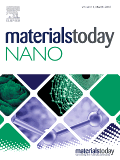
Materials Today Nano
Pioneering Discoveries in Nano-Materials for a Sustainable FutureMaterials Today Nano, published by Elsevier, is a premier academic journal dedicated to the forefront of nano-materials research, encompassing innovations and advancements in biomaterials, condensed matter physics, electronic, optical, and magnetic materials, as well as materials chemistry. With an impressive Q1 ranking across multiple categories, including biomaterials and materials chemistry, this journal serves as a essential platform for researchers, professionals, and students aiming to contribute to and stay informed on cutting-edge developments that push the boundaries of materials science. Its open access model allows for wider dissemination of high-impact findings, ensuring that the research reaches a global audience. Operating from the United Kingdom, Materials Today Nano plays a vital role in fostering interdisciplinary collaboration and advancing scientific understanding in this rapidly evolving field.

Nano Futures
Pioneering Research at the Nanoscale FrontierNano Futures, published by IOP Publishing Ltd, is an influential journal dedicated to advancing the field of nanoscale science and technology, encompassing a wide range of disciplines such as Atomic and Molecular Physics, Bioengineering, and Materials Science. With a growing impact within the academic community, this journal has achieved a notable Q2 classification in categories like Chemistry and Electrical Engineering, making it a critical resource for researchers, professionals, and students seeking to explore innovative advancements in nanotechnology. Established in 2017 and operating through 2024, Nano Futures provides open access options for readers, ensuring wider dissemination and engagement with cutting-edge research findings. The journal's commitment to showcasing high-quality research makes it an essential channel for exploring the intersection of nanoscale innovations and practical applications in various industries.
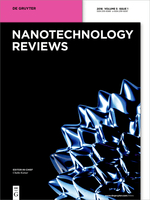
Nanotechnology Reviews
Shaping the Future with Nanotechnology InsightsNanotechnology Reviews, published by DE GRUYTER POLAND SP Z O O, stands at the forefront of the multidisciplinary field of nanoscience and nanotechnology. With an Open Access model adopted since 2019, this journal, identifiable by its ISSN 2191-9089 and E-ISSN 2191-9097, disseminates vital research that is accessible to a global audience. The journal is located in Germany and has established itself as a premier platform for innovative research, boasting impressive quartile rankings: Q1 across several categories including Biotechnology, Energy Engineering, and Materials Science, as well as a Q2 classification in Biomaterials as of 2023. The diverse scope enables authors to contribute to a range of topics, from biomedical applications to energy solutions and advanced materials, making it essential reading for researchers, professionals, and students passionate about cutting-edge developments. Additionally, with Scopus rankings highlighting its value across various domains and robust percentiles, including 94 in Engineering (miscellaneous), 93 in Medicine (miscellaneous), and 88 in Biotechnology, Nanotechnology Reviews is an influential and respected journal that fosters scientific dialogue and innovation.
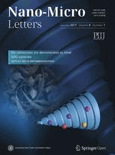
Nano-Micro Letters
Advancing nanotechnology through open collaboration.Nano-Micro Letters is a premier open-access journal published by Shanghai Jiao Tong University Press, specializing in groundbreaking research in the fields of Electrical and Electronic Engineering, Nanoscience, and Materials Science. Launched in 2009, this journal has rapidly established its reputation, achieving Q1 ranking across various categories, including Electronic, Optical and Magnetic Materials, and Surfaces, Coatings and Films, indicating its significant impact within the academic community. With an impressive Scopus ranking of #5 out of 797 in Electrical and Electronic Engineering and #2 in Surfaces, Coatings and Films, Nano-Micro Letters serves as a vital platform for disseminating cutting-edge insights and innovations in nanotechnology. Researchers, professionals, and students are encouraged to engage with the open-access content, fostering a collaborative environment that promotes the advancement of knowledge in these dynamic fields.
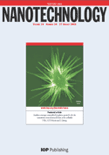
NANOTECHNOLOGY
Transforming Ideas into Nanotechnology Breakthroughs.NANOTECHNOLOGY is a premier academic journal published by IOP Publishing Ltd, focusing on cutting-edge advancements in the interdisciplinary field of nanoscience and nanotechnology. With a strong emphasis on research that bridges biology, chemistry, engineering, and materials science, this journal presents high-quality, peer-reviewed articles that cater to the diverse interests of researchers, professionals, and students alike. NANOTECHNOLOGY boasts an impressive ISSN: 0957-4484 and E-ISSN: 1361-6528, and holds a notable position within Scopus, ranked in the second quartile (Q2) across multiple categories including Bioengineering and Mechanical Engineering, underscoring its vital role in advancing the field. The journal's impact is further highlighted by its robust rankings, making it essential reading for those looking to stay at the forefront of nanotechnology research. Commencing in 1990 and with publication extending through to 2024, NANOTECHNOLOGY provides a unique platform for disseminating significant findings and innovative methodologies while fostering collaborations across various scientific disciplines. In a rapidly evolving technological landscape, this journal not only enhances academic discourse but also contributes to the practical applications of nanotechnology in real-world scenarios.
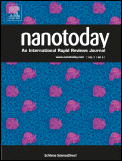
Nano Today
Exploring the transformative potential of nanomaterials.Nano Today is a prestigious journal published by ELSEVIER SCI LTD that stands at the forefront of nanoscience and nanotechnology research. With an impact factor that underscores its significance, this journal has achieved remarkable rankings in several key categories as of 2023, including Q1 positions in Bioengineering, Biomedical Engineering, Biotechnology, Materials Science, and Pharmaceutical Science, making it an essential resource for scholars and professionals alike. ISSN 1748-0132 and E-ISSN 1878-044X, the journal serves as a vital platform for disseminating cutting-edge research findings and innovative applications in the field. Although open access options are not available, the journal's rich repository of peer-reviewed articles provides invaluable insights into the latest advancements in nanotechnologies. Based in the Netherlands, Nano Today not only connects a global network of researchers but also propels forward the conversation on the transformative potential of nanomaterials across multiple disciplines. With a commitment to advancing knowledge and fostering innovation, Nano Today is an indispensable tool for academics and practitioners dedicated to pushing the boundaries of scientific exploration.